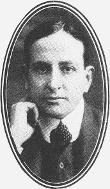The first Australian film to be based on the real-life British criminal John Babbacombe Lee, whose attempted execution by hanging failed three times, before his sentence was commuted to life imprisonment.
The plot of the melodrama on which the film is based (see note), is described as follows:
'The scene opens with a beautiful moonlight setting of the Babbacombe homestead and gardens, wherein John Lee makes his appearance after an absence of some years served in the navy. On his return, he at once becomes engaged Kate Merton, his old sweetheart. His rival, Fred Masterville, who proves to be of the worst type possible, acts upon a scheme to bring shame upon him by depositing in Lee's bag a purse containing £20. Dicky Dood happens to sec this, and politely converts the money to his own use. Masterville, proving unsuccessful in this attempt, breaks an entrance into Miss Cleveden's house, with an accomplice, Jim Wells, with the intention of robbery, and on being discovered and recognised by Miss Cleveden murders her. Lee is arrested on suspicion, tried, found guilty, and is sentenced to death. Three times he is taken to the scaffold, which three times fails in its appointed task. As a result, Lee receives a life sentence. Twenty-two years later Lee and the real murderer meet face to face. Jim Wells, his old accomplice, turns King's evidence, Lee is released and marries his old sweetheart, and the light of day is let in upon the most mysterious case the world has ever known.'
Source:
'The Man They Couldn't Hang', Singleton Argus, 2 September 1911, p.4.


